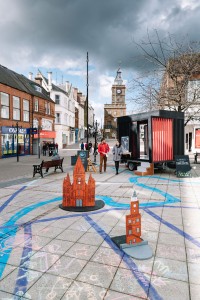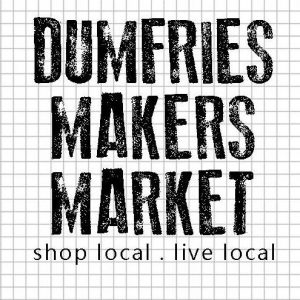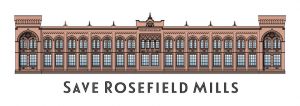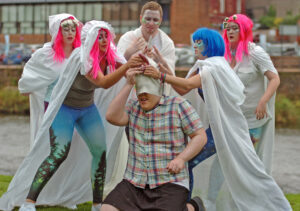By Matt Baker
In this post I’m going to talk about sport, or specifically, about how we value and fund sport in Scotland and how this could positively enhance culture[1] in Scotland and deliver on our national strategy for culture[2]
We fund sport in Scotland in two ways, firstly we support sports venues, organisations, individual sportspeople, international competitions and the promotion of sport. So, a very similar picture to the way we fund culture.
But, importantly, we also fund grassroots sports development, local clubs and opportunities for everyone to take part in sport. It can be strongly argued that this support for participation in sport embeds many of the qualities of sport in our nation – such as teamwork, self-improvement, physical activity etc far more so than would be achieved by simply watching others playing sports. It also clearly drives an accessibility and inclusion which we see demonstrated in the diversity of backgrounds of successful sportspeople and those who comment on/present and administrate sport.
I need to say before I start to talk directly about support for culture that all my arguments are based on the foundation that we must retain the support we already give to culture. Everything I am saying here is about additional support which compliments, enhances and relies on continuing support for our national cultural infrastructure and development.
Fundamentally, in Scotland, we do not have a comparable second strand of support for participation in culture. In 1946, the first chairman of the Arts Council of Gt Britain announced, ‘It is about the best not the most. The principle is we support professional artists. That’s our obligation. And our second obligation is to enable others to appreciate, understand and benefit from that’[3] and that is still pretty much the principle of how we fund culture in Scotland today. As a result, culture has ended up in something of a silo of its own, concerned with culture in and of itself rather than the potential for culture to make the deepest contribution to society as a whole.
Yes, we do our best with the cultural support we have in Scotland to encourage growth from the grassroots of our communities and there are some incredible isolated examples of this – but fundamentally Scotland does not have a clear policy or a mechanism to support widespread participation in culture. There are many cultural groups, projects and organisations that promote grassroots participation, however, in order to support their work, they find themselves in competition for funds with other groups working in food poverty, addiction services etc and unsurprisingly ‘culture’ often misses out, seen as a ‘nice to have’ but not ‘necessary’.
So, why is the situation for sport so different? The straightforward answer is that sport made a focussed and sustained case for the health impacts of physical activity and inclusion in communities. One direct outcome of improving people’s wellbeing through sport is that there is less demand on the health service with a consequent saving of money.
Culture has a myriad of similar arguments for the societal value of participating in and shaping the culture of the country:
- Mental health/wellbeing and positive pathways for disadvantaged individuals/communities
- Reducing social isolation
- Education in teamwork, problem-solving and adaptability
- Community cohesion/safety
- Community visioning and placemaking
- Innovation growing new businesses and social enterprises
(to name but a few…)
So, why don’t we have support for participation in culture as we do in sport? I believe that part of the answer lies in the very multiplicity of societal impacts from participation in culture, the argument can become diffuse and unclear because of its diversity. However, the issue also lies with the culture sector itself, we have been starved of investment for so long that we cling with white knuckles to what we have and that the way we are used to doing things. In that anxious state the concern expressed is that a participation strand in culture would somehow dilute the quality of our cultural offer by setting up a two-tier system of ‘first and second class art’. The argument goes that this could disrupt the perfectly equal and accessible meritocracy we have now. In truth, culture is the very opposite of equal and accessible currently, and risks side-lining itself into irrelevance unless it finds the confidence and optimism to open itself up and be part of the change required to build a society that is founded on wellbeing, fairness, and opportunity for all.
And of course, as with sport, funding grassroots participation is wholly dependent on the existence of, and a relationship with, a strong and healthy professional cultural sector.
Making the Case
I believe the opportunity and case for supporting culture as a key building block towards a Wellbeing Economy has yet to be effectively made to our politicians, so that they can lay a pathway of understanding and support in parliament and government. The Culture Strategy offers a policy framework for this work, and I’d propose we’d use the strategy as a foundation for making the case through its three pillars of Strengthening, Transforming, Empowering through culture and its core principle of culture being ‘mainstreamed’ across all the portfolios of government.
We need to work across portfolios and in collaboration with those working in government and policy and listen to advice about how to make the case for participation in culture. In the spirit of furthering the idea, I’d like to offer a few thoughts on how such an idea might be implemented. These are simply in the form of a framework or principles for making embedding participation in culture one of the features of the Scottish nation.
A Percentage for Culture
Because of the diverse impacts of cultural participation any approach needs to be cross-portfolio (health/wellbeing, education/lifelong learning, communities/regeneration, justice, economy/enterprise). An idea that has been talked of for a while is a ‘percentage for culture’ – this could take the form of a tiny percentage of the budgets of departments whose outcomes could benefit from the impacts of participation in culture (see list above) being allocated to cultural participation programmes.
A principle of any ‘percentage for culture’ policy would require that the departments contributing budget would hold accountability and a degree of control of how budget is spent and the delivery of outcomes. How this would work in practice is beyond the scope of this paper. All I seek to do is propose some principles, one being that a ‘percentage for culture’ cannot simply be handed to a cultural agency to be distributed without the ongoing involvement of the departments contributing to the scheme. Long-term impact and change in society needs to be built into this idea and the mechanism for growing deeper and more integrated joint working between culture and other departments of government.
Other thoughts on implementation would be a need/opportunity for a regional and place-based approach reflecting the very different challenges and opportunities of working within the urban and rural areas of the country. Such an initiative would also be an opportunity to explore the potential for longer-term funding agreements with programmes, projects and organisations. This is a principle that comes up in every sector consultation and the benefits to service users, service providers and funders of long-term agreements has been clearly articulated. One possibility could be to use ‘percentage for arts’ public funding as the basis for regional (or national?) ‘endowments for culture’[4] which could lever additional funds from local sources to develop added value and security for participation in culture.
A Framework
In summary a Participation in Culture Initiative framework could include:
- Percentage for culture across government departments
- Accountability/collaboration across departments in implementation of Participation in Culture
- Regional/place-based approach to implementation
- Innovation in funding models
I’d be very interested to hear from anyone with thoughts about supporting participation in culture and particularly anyone who’d like to help develop the case. Please get in touch at [email protected] or @_mattbaker on Twitter
[1] ‘Everyone has the right to participate freely in the cultural life of the community, to enjoy the arts and to share in scientific advancement and its benefits’ (Article 27, Universal Declaration of Human Rights)
[2] ‘Scotland is a place where culture is valued, protected and nurtured. Culture is woven through everyday life, shapes and is shaped by society, and its transformative potential is experienced by everyone.’ (Culture Strategy for Scotland. 2020) Full strategy here
[3] The beginnings of the British Arts Council and its shift away from ‘participation in culture’ to ‘professionalised culture’ is well covered in ‘Culture, Democracy and the Right to Make Art
– The British Community Arts Movement’ edited by Alison Jeffers and Gerri Moriaty.
[4] The work of Leah Black at EVOC is instructive in this regard – see her initial report into setting up a long-term fund for Third Sector organisations in Edinburgh
Matt Baker is the Orchestrator of The Stove Network and one of The founders of the organisation. His challenge is to remain attuned to the overall direction of The Stove, through remaining true to our values and leading a culture of learning, empowerment and excellence within our organisation. Matt is also the interim chair of the National Partnership for Culture, the independent group appointed by the Cabinet Secretary for Culture to support the delivery of the national culture strategy.



























